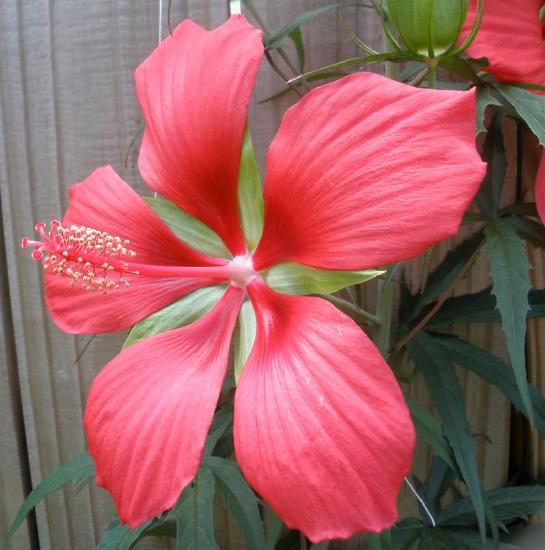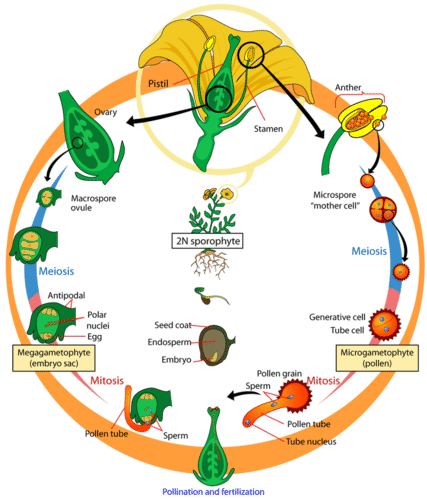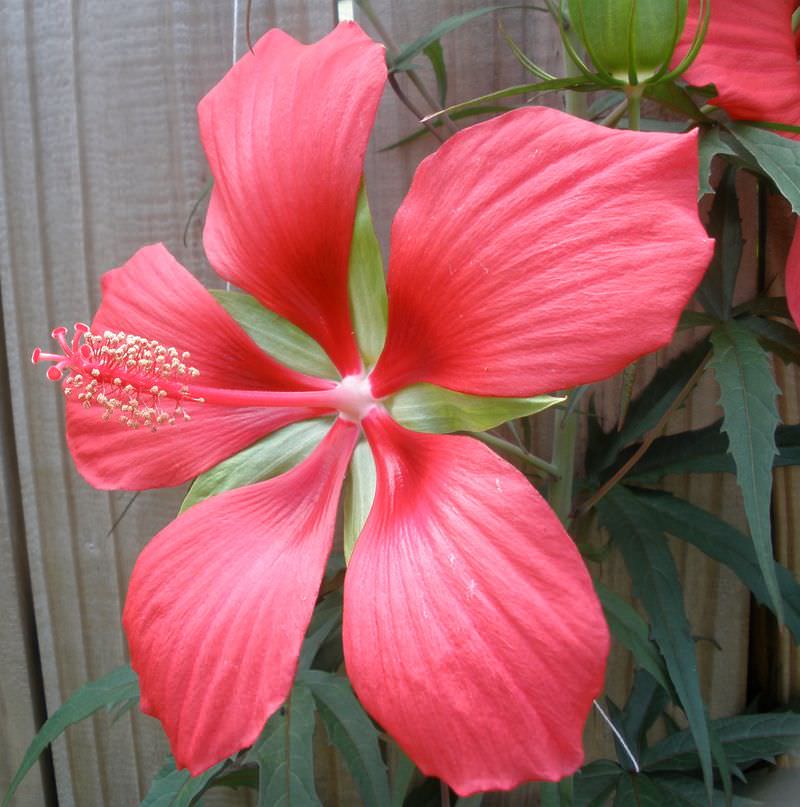9.13: Life Cycle of Angiosperms
- Page ID
- 12235

What's the most successful type of plant?
Flowering plants. Why? As you know, flowers come in many different styles and colors, and many are visually pleasing. This aids in pollination. Also notice the anatomy of this Hibiscus flower. Each part has evolved to play a role in the life cycle.
Life Cycle of Angiosperms
Angiosperms, or flowering plants, are the most abundant and diverse plants on Earth. Angiosperms evolved several reproductive adaptations that have contributed to their success. Like all vascular plants, their life cycle is dominated by the sporophyte generation. A typical angiosperm life cycle is shown in Figure below.
 Life cycle of an angiosperm
Life cycle of an angiospermThe flower in Figure above is obviously an innovation in the angiosperm life cycle. Flowers form on the dominant sporophyte plant. They consist of highly specialized male and female reproductive organs. Flowers produce spores that develop into gametophytes. Male gametophytes consist of just a few cells within a pollen grain and produce sperm. Female gametophytes produce eggs inside the ovaries of flowers. Flowers also attract animal pollinators.
If pollination and fertilization occur, a diploid zygote forms within an ovule in the ovary. The zygote develops into an embryo inside a seed, which forms from the ovule and also contains food to nourish the embryo. The ovary surrounding the seed may develop into a fruit. Fruits attract animals that may disperse the seeds they contain. If a seed germinates, it may grow into a mature sporophyte plant and repeat the cycle.
Summary
- In flowering plants, the gametophyte generation takes place in a flower, which forms on the mature sporophyte plant.
- Each male gametophyte is just a few cells inside a grain of pollen. Each female gametophyte produces an egg inside an ovule.
- Pollination must occur for fertilization to take place. Zygotes develop into embryos inside seeds, from which the next sporophyte generation grows.
Review
- State the functions of flowers and fruits in angiosperm reproduction.
- Create your own cycle diagram to represent the life cycle of a daisy.
Resources
| Image | Reference | Attributions |
 |
[Figure 1] | Credit: Mariana Ruiz Villarreal (LadyofHats) for CK-12 Foundation Source: CK-12 Foundation License: CC BY-NC |
 |
[Figure 2] | Credit: Mariana Ruiz Villarreal (LadyofHats) for CK-12 Foundation Source: CK-12 Foundation License: CC BY-NC 3.0 |

